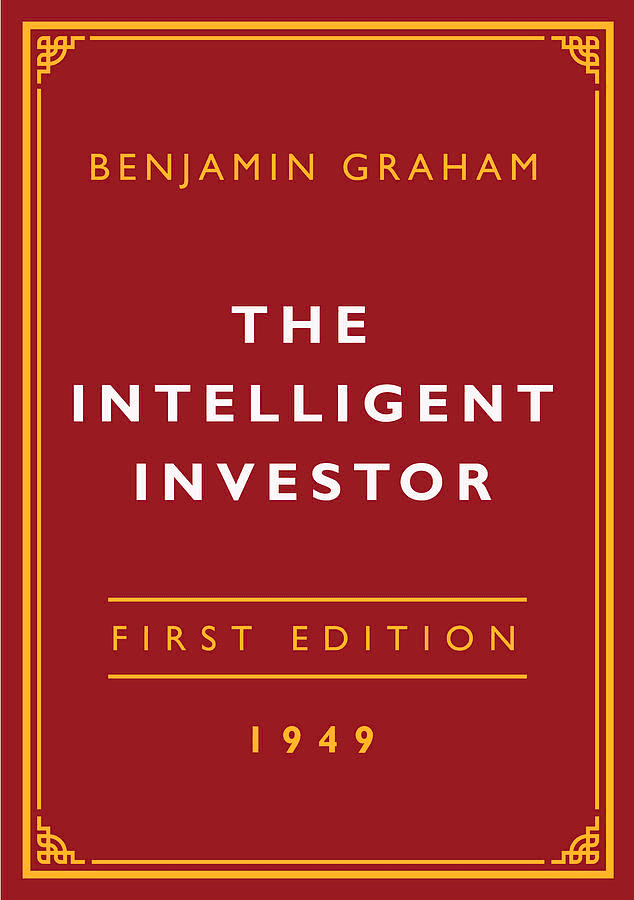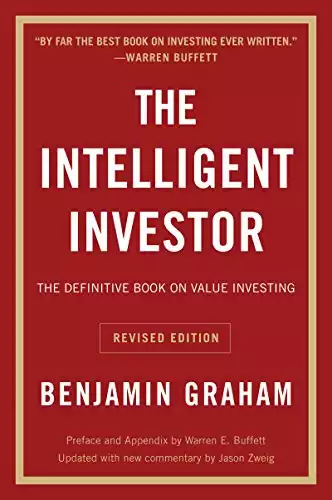Overview : The Intelligent Investor by Benjamin Graham
-
Book Title: The Intelligent Investor
-
Author: Benjamin Graham
-
Publication Date: April 1949
-
Rating: 5
-
price: $18.49
-
Pages: 640
About the Author
Benjamin Graham, known as the "father of value investing," was a renowned economist and investor. His teachings on investment strategies and market psychology, as exemplified in "The Intelligent Investor", continue to influence generations of investors, including Warren Buffett.
The Intelligent Investor Introduction
In the ever-changing landscape of personal finance and investing, few books have stood the test of time like Benjamin Graham's "The Intelligent Investor." First published in 1949, this seminal work continues to shape the strategies of both novice and seasoned investors in today's complex financial markets. As we navigate through volatile market trends and the rise of new investment vehicles like cryptocurrencies, Graham's principles remain as relevant as ever.
The Intelligent Investor Book Summary
"The Intelligent Investor" is a comprehensive guide to value investing, a strategy that focuses on identifying undervalued stocks and holding them for long-term growth. Graham, often referred to as the "father of value investing," presents a meticulous approach to investment that emphasizes thorough analysis, disciplined decision-making, and a long-term perspective.
The book is divided into several key sections:
- Investment vs. Speculation
- The Concept of Mr. Market
- Margin of Safety
- Defensive and Enterprising Investor Strategies
- Portfolio Management
- Market Analysis
Analysis of Themes
Mr. Market and Emotional Discipline
One of the book's most enduring concepts is that of "Mr. Market," a metaphor Graham uses to personify the stock market's erratic behavior. This analogy serves as a powerful reminder of the importance of emotional discipline in investing. As Warren Buffett, Graham's most famous student, once said:
"Be fearful when others are greedy and greedy when others are fearful."
This principle is particularly relevant in today's fast-paced financial world, where market sentiment can shift rapidly due to factors like social media influence and high-frequency trading.
Margin of Safety
Graham's emphasis on the "margin of safety" concept is a cornerstone of value investing. This principle advises investors to buy securities only when their market price is significantly below their intrinsic value. In the context of modern investing, this approach can be applied not only to stocks but also to other assets, including real estate and even certain cryptocurrencies.
Defensive vs. Enterprising Investing
The book distinguishes between defensive and enterprising investors, providing tailored advice for each. This classification remains relevant today, helping readers identify their risk tolerance and investment style in an era of diverse investment options, from index funds to robo-advisors.
Writing Style
Despite the complexity of some financial concepts, Graham's writing is remarkably accessible. He uses clear language and real-world examples to illustrate key points, making the book approachable for readers with varying levels of financial expertise. The latest editions, updated with commentary by Jason Zweig, further enhance the book's relevance to modern markets.
Strengths and Weaknesses
Strengths:
- Timeless principles applicable to various market conditions
- Clear distinction between investing and speculation
- Emphasis on risk management and emotional discipline
- Practical advice for both conservative and aggressive investors
Weaknesses:
- Some may find the focus on value investing too conservative
- Limited coverage of modern investment vehicles (e.g., ETFs, cryptocurrencies)
- Emphasis on individual stock selection may not appeal to passive investors
Alternative Books of The Intelligent Investor
While "The Intelligent Investor" focuses on value investing, it's worth comparing it to other influential investment books:
- A Random Walk Down Wall Street" by Burton Malkiel - Advocates for efficient market hypothesis and passive investing
- Common Stocks and Uncommon Profits" by Philip Fisher - Emphasizes qualitative factors in stock selection
- "The Little Book of Common Sense Investing" by John Bogle - Promotes index fund investing
Graham's work stands out for its comprehensive approach to value investing and its enduring influence on financial thought leaders.
Highlights from The Intelligent Investor by Benjamin Graham
Value Investing: Focuses on buying undervalued stocks with solid fundamentals to minimize risk and maximize returns.
Margin of Safety: Emphasizes investing with a margin of safety, meaning buying at a price well below intrinsic value to protect against market fluctuations.
Emotional Discipline: Successful investing requires patience and discipline, not emotional reactions to market highs and lows.
Defensive vs. Enterprising Investor: Distinguishes between conservative investors seeking steady returns and aggressive ones willing to do more research for higher gains.
Market Fluctuations as Opportunities: Treats market volatility as a chance to buy quality stocks at lower prices, not as a risk.
Focus on Fundamentals: Stresses long-term company performance and financial stability over short-term market trends.
Book Recommendations
This book is a must-read for anyone looking to build a strong foundation in investing. It’s especially recommended for readers interested in value investing or seeking to understand Warren Buffett’s philosophy, as Buffett himself considers it the best investing book ever written. While casual readers may find it heavy on technical details, serious investors will consider it an indispensable resource.
Conclusion
"The Intelligent Investor" remains an indispensable resource for anyone serious about mastering the art of investing. Its principles of thorough analysis, emotional discipline, and long-term thinking are as relevant in today's world of cryptocurrencies and high-frequency trading as they were in the mid-20th century.
Whether you're a defensive investor looking to preserve wealth or an enterprising investor seeking market-beating returns, Graham's insights can help you navigate the complex world of finance with confidence. As the banking sector evolves and new investment opportunities emerge, the foundational wisdom in this book will continue to serve as a guiding light for intelligent investors.
Ready to embark on your journey to becoming an intelligent investor? Get your copy of "The Intelligent Investor" today and start building a robust investment strategy that stands the test of time. In conclusion, this article has provided an overview of the topic at hand.





